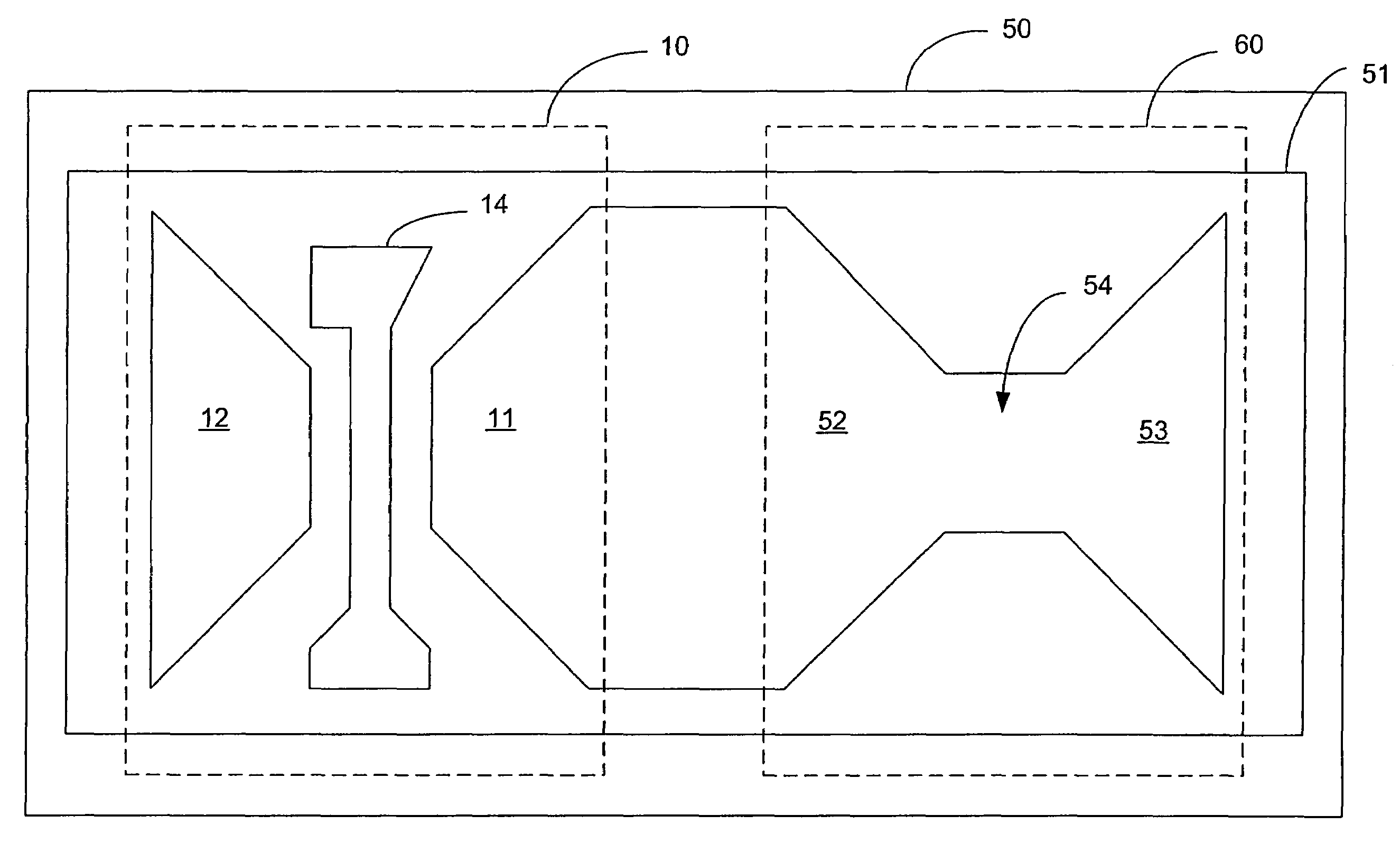Integrated spark gap device
a spark gap and integrated technology, applied in the field of spark gap devices, can solve the problems of large amount of energy to be released, inability to embed spark gap devices in ics, etc., and achieve the effects of low cost, small size of the device, and mass production
- Summary
- Abstract
- Description
- Claims
- Application Information
AI Technical Summary
Benefits of technology
Problems solved by technology
Method used
Image
Examples
Embodiment Construction
[0016]The present invention is a spark gap device that is capable of operating at high voltages and that is fabricated on an integrated circuit (IC). The term “integrated circuit”, as that term is used herein, is intended to denote a circuit comprising components that are integrated together on a substrate material. The substrate material is not limited to any particular type of material. FIG. 1 illustrates a plan view of a schematic diagram of the integrated spark gap device 1 of the present invention in accordance with an embodiment. The layout shown in FIG. 1 is one of many possible layouts that can be used for the integrated spark gap device 1. The present invention is not limited to any particular IC layout for the spark gap device.
[0017]In accordance with the embodiment shown in FIG. 1, the integrated spark gap device comprises a high-voltage switch 10 formed on a substrate material 20. In accordance with this embodiment, the substrate material 20 is a dielectric material such...
PUM
| Property | Measurement | Unit |
|---|---|---|
| voltage | aaaaa | aaaaa |
| conductive | aaaaa | aaaaa |
| electric field | aaaaa | aaaaa |
Abstract
Description
Claims
Application Information
 Login to View More
Login to View More - R&D
- Intellectual Property
- Life Sciences
- Materials
- Tech Scout
- Unparalleled Data Quality
- Higher Quality Content
- 60% Fewer Hallucinations
Browse by: Latest US Patents, China's latest patents, Technical Efficacy Thesaurus, Application Domain, Technology Topic, Popular Technical Reports.
© 2025 PatSnap. All rights reserved.Legal|Privacy policy|Modern Slavery Act Transparency Statement|Sitemap|About US| Contact US: help@patsnap.com



